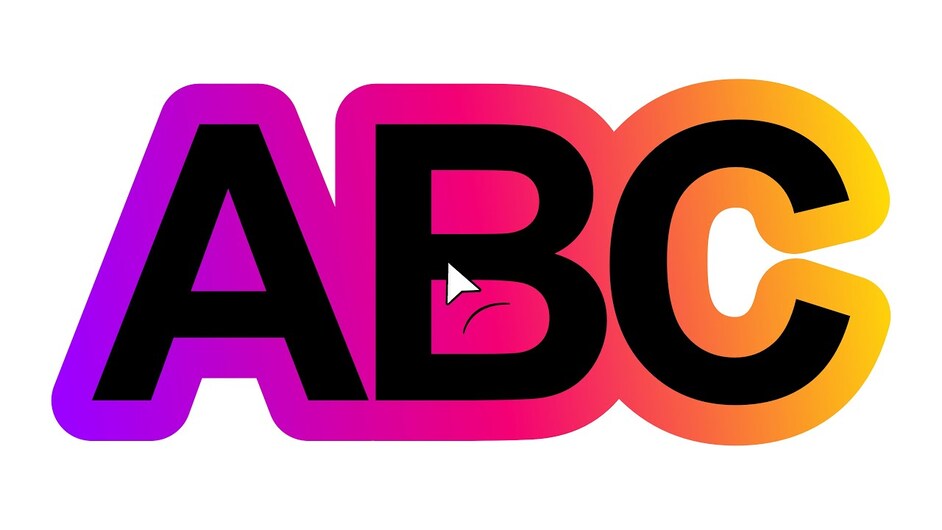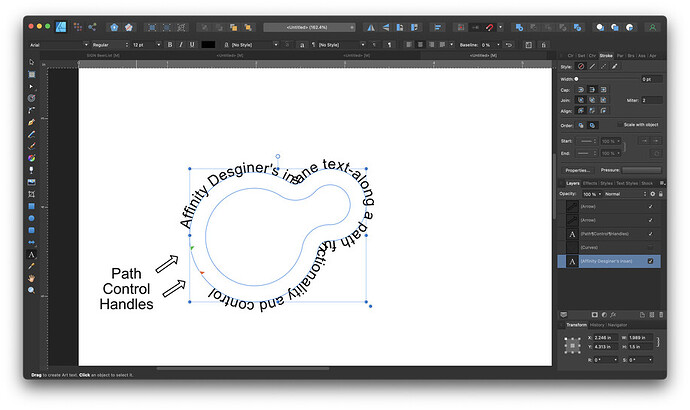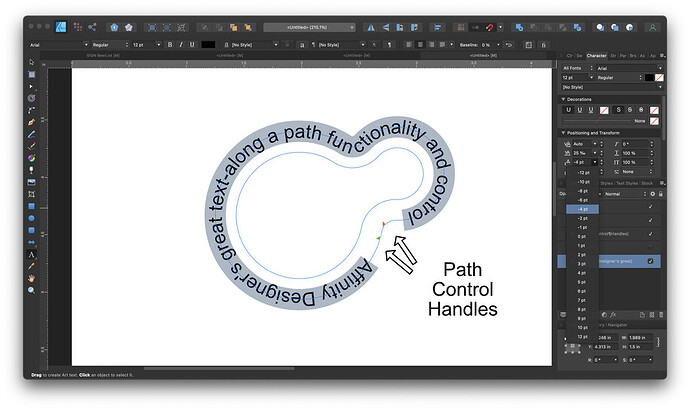Thanks so much for the detail! I will give these steps a try…thankfully they make sense:-). I like making the copy to edit later as i do a lot of duplicate type things. Some of the ‘snapping’ stuff i am not familiar with (center snapping) but each thing I learn is so helpful. And, i have learned a lot over the past year. Just at a point where i’m trying to ‘make’ myself learn more.
I have watched tons of videos, and they’re great, but when i go to ‘make’ something I’ve forgotten what i learned or can’t apply to what i’m doing.
So by default inkscape snaps parts to each other, usually on corner nodes and to guides. You can change the snapping behavior with the buttons on the right side. There’s a tutorial for this, one sec:
http://tavmjong.free.fr/INKSCAPE/MANUAL/html/Snapping.html
Understanding snapping, node editing, and guides are key to making really precisely aligned designs.
I’m not the best at describing what i need! Thanks for your help though!
That looks like horse carp or perhaps a bullcarp 

I’m following your design but unfortunately Inkscape froze on me and i had to close it. BUT, i did ‘finally’ get the snapping-haven’t used that. Usually i disable it because it can be a pain. I got down as far as changing the circles to shapes so I’ll start over when i can and make sure i understand it. I love that center snap and rotating around the circle! Thank you!
Here’s an example of why it’s worthwhile to pursue Affinity Designer…
Two notebooks ago (pre-Glowforge), I spent time with Inkscape to see how suitable it was for a post-Adobe (Illustrator) workflow. Text-on-a-path is a critical must-master tool for any (vector) illustration program. Inkscape’s implementation was just downright crude after a decade+ playing in Adobe Illustrator and Macromedia Freehand before that. Granted I must’ve been tinkering with version 0.9x at the time where Inkscape wasn’t out of it’s beta yet… Along with other idiosyncrasies, I couldn’t NOPE my way out of Inkscape fast enough. Right now having Googled a tutorial of how it’s being done in 2020, it’s STILL maddeningly primitive.
For anyone who’s watched a quickie tutorial on how Affinity Designer does text-on-a-(complex)-path, I can’t imagine wanting to devolve back to Inkscape’s implementation.
Using the new CONTOUR TOOL in Affinity Designer, I create a more difficult path. Glowforgers NEED to play with this tool way more as it can generate some amazing geometry or happy accidents. Here’s a queued up tutorial: (start at 3:35)
Once you get the desired geometry, have Contour Tool BAKE the shape, then do a LAYER > EXPAND STROKE if you want two perfectly offset paths. Select the TEXT tool, hover directly over the path and click to lay in text… none of Inkscape’s additional select & apply steps needed. The text path control shines at THIS point because Affinity Designer (and other high-end apps) will provide triangle handles to let that text slide along that path in real-time. It’s a text-path party train!
Looking up “Text Path” in Designer’s Help section will bring up all the ways to manipulate the handles including how to get the text to flip to the inside of the path.
Not happy with the font face, size, or spacing? Just click the path using the basic selection tool (V) and pull down the font listing (top left). All the text inside that selection updates in REAL TIME as you hover over each font name. Much of Affinity’s tools show you the results in real time like this as opposed to making a change in a dialog box and hitting the Apply button.
Clear example of how a “free” program (Inkscape) can sap away my time repeatedly clicking & adjusting something that SHOULD offer more control and real-time live results. I can understand not hemorrhaging ~$600/year to have Adobe anoint me with Illustrator, but when it comes to Inkscape or Designer? I’ll put up with a few instant Ramen lunches to go with the latter. ![]()
Beyond this, the fact that Designer is also available for the iPad shouldn’t be overlooked. The ability to create organic vector shapes using an Apple Pencil can quickly elevate artwork beyond what a mouse-only workflow can provide. Because the same program spans across different hardware and OS bases, it shouldn’t be difficult to imagine the ways the strengths of each platform can be used to contribute to the same project.
I haven’t played much with the contour tool, but have done a lot of messing around with creating text paths. I agree with your assessment about AD. I’ve used the pen tool and drawn a shape then turned it into an interesting text path, too. Since you just posted this, I will ask you…what exactly does ‘bake’ do…I’ve never tried it. Is it obvious…that baking just finalizes something? Nice write up…thank you.
In the compound cluster shown in the video, the circles all still exist in the sublayer making up the compound. Each should be selectable to play around with that “lava” effect. Once you get the shape exactly as you’d like, I believe “Baking” would permanently merge everything into a single continuous curve…more specifically that this is a “normal” curve that allows you to go into the NODE tool and mess around with its inherent bezier handles. At THIS stage of a single curve, it’s still possible to change to a MUCH thicker stroke (thick line) and THEN do a Layer > Expand Stroke. For CAD users, this would be the equivalent of a Curve Offset. Having offset curves would be a super-useful Glowforge cutting asset for many.
I should also point out that right after that baking stage, the single resulting curve can itself be used for Contour Tool again.
With a little planning, Affinity Designer’s Contour Tool should be a god-send for our resident leather crafters, but for now I’ll save that for another post another day. ![]()
Addendum:
The way the characters squish up in tight path spaces of the previous post? That’s the result of how each letter’s base sits on the curve versus how it has to follow it’s own tracking rules. Designer’s continued control AFTER the path text operation can easily fix that. Highlight all the characters and find the Character Palette on the right. All those fine-tuning controls are still operable in real-time. Give it a -4 Baseline to alter the “hinge-point” and play with the Tracking.
Ah…thank you. Sounds quite similar to what I thought it must do. I will play around with that more. As cookies out of the oven…baked…the finalization.
Wow, thanks for the info! This does look promising. I may try my hand at learning this. Any ‘best’ tutorials for beginners? I do best with visual examples versus written instructions…
That is some very interesting info. I am finding Gimp to frequently fill in where I am not happy with Inkscape results. It has what it calls Paths for making vectors that fit in the place between pixels and vectors in the workflow.
About wasting time…One surprising thing I found working with Blender and other pricey programs was that the sale of the program to new users was a primary motive for the expensive program as experienced people will already have it. (Program rental though annoying may change that dynamic some)
Unlike the expensive programs, those who write the GNU software have as their main income using that software and are motivated by wanting to make that part of the job easier. Thus if ever they are annoyed by some aspect of the program, they will write something to fix it.
Thus I have found that GNU programs tended to be harder to learn, but tended to work more efficiently once you have done so.
I worked with Autocad for many years and used LISP to speed up my work and get around those annoyances. Later I took up Blender and it is a huge learning curve, being several different programs that were different skill sets depending on what you wished to accomplish. After a while I needed to go back to Autocad and was shocked at all the annoying bits, particularly having to hit a Return far more often than Blender that my Lisp never got to changing. ( I had by that point eliminated the decision trees so each command did the thing I intended, and not wandering through many steps of decision that make things easier for the new user, but a PIA if one is not a new user)
Things have changed a lot over the years the GNU stuff is easier to learn and rented software has had to address issues of experienced users, but there is always the trap that all your effort to learn a program comes to naught if you lose access to that program. < /rant >
This topic was automatically closed 32 days after the last reply. New replies are no longer allowed.


